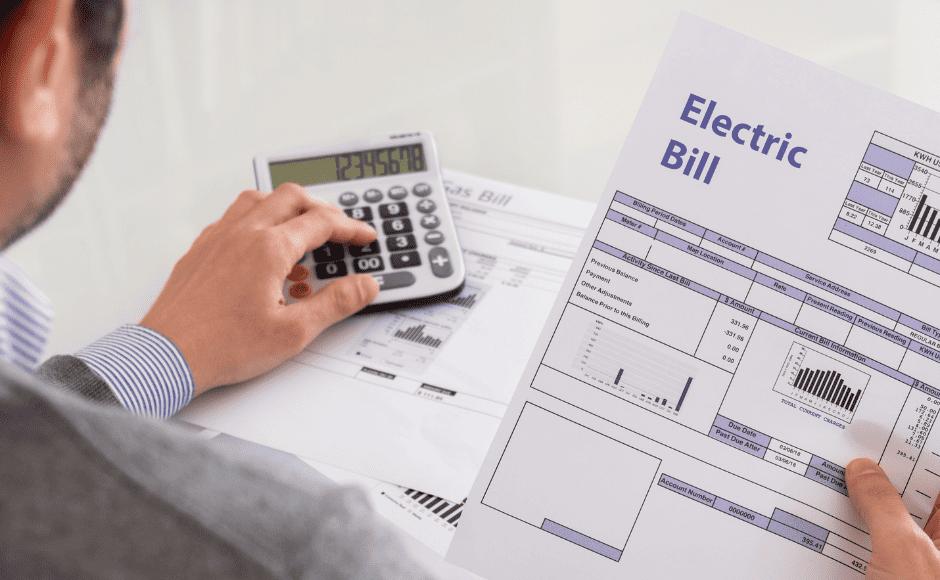We’re letting you know that this post contains sponsored links which Your Savvy Purse receives compensation for, which may impact their order of appearance.
Energy bills can be a major source of stress, especially during the colder months or in extreme heat. The good news is that there are plenty of ways to reduce your energy consumption without sacrificing comfort. From simple lifestyle changes to investing in energy-efficient appliances, here are over 35 ways to save money on your energy bill.
1. Unplug Devices When Not in Use
Electronics and appliances that are left plugged in use energy, even when turned off. Unplugging devices, or using power strips to disconnect multiple items at once, can help reduce “phantom” energy usage.
2. Switch to LED Lightbulbs
LED lightbulbs use a fraction of the energy of incandescent bulbs and last much longer, saving you money over time.
3. Use Smart Thermostats
A smart thermostat can adjust your heating and cooling automatically based on your schedule, ensuring you’re not wasting energy when you’re not home.
4. Seal Drafts
Check windows, doors, and cracks around your home for drafts. Sealing them with weatherstripping or caulking can significantly reduce the amount of energy lost.
5. Insulate Your Home
Proper insulation keeps your home warmer in winter and cooler in summer, reducing the need for heating and cooling.
6. Use Ceiling Fans
Ceiling fans help circulate air, making it easier to maintain a comfortable temperature without cranking up the AC or heat.
7. Set Your Thermostat Lower in Winter, Higher in Summer
During the winter months, try to set your thermostat to 68°F (20°C) or lower, and in summer, set it to 78°F (25-26°C) when you’re home, adjusting when you’re away.
8. Wash Clothes in Cold Water
Washing clothes in cold water can save energy by not using your water heater. Detergents today are formulated to work well in cold water.
9. Dry Clothes Efficiently
Using a clothesline or drying rack saves energy. If using a dryer, make sure to clean the lint filter to improve efficiency.
10. Use Energy-Efficient Appliances
Look for Energy Star-rated appliances. They use less energy to do the same job, reducing your overall energy consumption.
11. Cook with Small Appliances
Instead of using the oven, which takes a lot of energy, try using a microwave, slow cooker, or toaster oven for smaller meals.
12. Use a Pressure Cooker
A pressure cooker uses less energy to cook food because it reduces cooking time and retains heat more efficiently.
13. Turn Off Lights When Not in Use
It sounds simple, but turning off lights when you leave a room can add up to significant savings over time.
14. Use Natural Light
Open curtains during the day to let sunlight in, reducing the need for artificial lighting.
15. Install a Programmable Thermostat
A programmable thermostat can automatically lower or raise your home’s temperature when you’re not home, ensuring you’re not paying to heat or cool an empty space.
16. Maintain Your HVAC System
Regularly replacing air filters and scheduling annual maintenance for your HVAC system can help it run more efficiently, reducing energy usage.
17. Close Vents in Unused Rooms
If you have rooms that are rarely used, close the vents and doors to avoid heating or cooling unused spaces.
18. Switch to Solar Power
If possible, consider installing solar panels on your home. Though the upfront cost can be significant, the long-term savings can be substantial.
19. Switch to a Time-of-Use Energy Plan
Many utility companies offer time-of-use pricing plans, where electricity is cheaper during off-peak hours. Try to shift your energy-intensive activities (like washing dishes or laundry) to these times.
20. Use Energy-Efficient Windows
Double-glazed windows or those with energy-efficient coatings help keep your home insulated, reducing the amount of heat and cool air that escapes.
21. Use Heat-Reflective Window Film
Heat-reflective window film can help keep your home cool during the summer and warm during the winter, reducing the need for excessive heating or cooling.
22. Cook in Bulk
Cooking large batches of food in one go can save time and energy, especially when you can freeze leftovers for later use.
23. Run Full Loads in the Dishwasher and Laundry
Running full loads in the dishwasher and washing machine reduces the number of cycles you need, saving both water and energy.
24. Replace Old Appliances
Older appliances often consume more energy than newer, more efficient models. Replacing them with Energy Star-rated appliances can lead to substantial savings.
25. Opt for a Tankless Water Heater
Tankless water heaters heat water on demand, eliminating the energy wasted by maintaining a large tank of hot water.
26. Maintain Your Refrigerator
Keep your fridge at the correct temperature (around 37-40°F/3-4°C) and clean the coils regularly to keep it running efficiently.
27. Use Smart Power Strips
Smart power strips can cut off power to electronics when they’re not in use, saving energy on devices that otherwise draw power continuously.
28. Install a Water-Saving Showerhead
Low-flow showerheads reduce water consumption without sacrificing water pressure, saving both water and the energy required to heat it.
29. Weatherproof Your Home
In addition to sealing drafts, make sure your home is properly weatherproofed by checking for gaps around doors, windows, and even electrical outlets.
30. Use a Fireplace Wisely
If you use a fireplace, make sure it’s properly sealed when not in use, and consider using a fireplace insert to increase its energy efficiency.
31. Take Shorter Showers
Reducing the time spent in the shower can significantly lower the amount of hot water you use, reducing both water and energy bills.
32. Use a Dishwasher Instead of Handwashing
Dishwashers use less water and energy than washing dishes by hand, especially if you run it only with full loads.
33. Install Motion Sensors for Lights
In rooms where lights are frequently left on by accident (like hallways and bathrooms), motion sensor lights can ensure that lights only turn on when needed.
34. Consider a Heat Pump
Heat pumps are highly efficient for both heating and cooling your home, using less energy than conventional systems.
35. Switch to a More Efficient Water Heater
If your water heater is old, consider upgrading to an energy-efficient model or a heat pump water heater to reduce energy use.
36. Use Smart Meters
Many utility companies offer smart meters that give you real-time feedback on your energy usage, helping you identify areas where you can cut back.
37. Change Your Air Filter Regularly
Clogged filters force your HVAC system to work harder, using more energy. Regularly changing air filters can keep your system running more efficiently.
38. Opt for LED Holiday Lights
If you’re decorating for the holidays, consider switching to LED lights. They use up to 90% less energy than traditional incandescent bulbs.
39. Invest in a Programmable Water Heater Timer
If your water heater doesn’t have an automatic timer, adding one can help reduce energy use by turning it off during times when you don’t need hot water.
40. Switch to a More Energy-Efficient HVAC System
If your current HVAC system is outdated, upgrading to an energy-efficient model can help reduce your overall energy consumption.
By implementing even a few of these strategies, you can start saving money on your energy bills while contributing to a more sustainable future. Whether you’re tackling small fixes like switching out light bulbs or making larger investments like installing solar panels, every change you make can add up.



